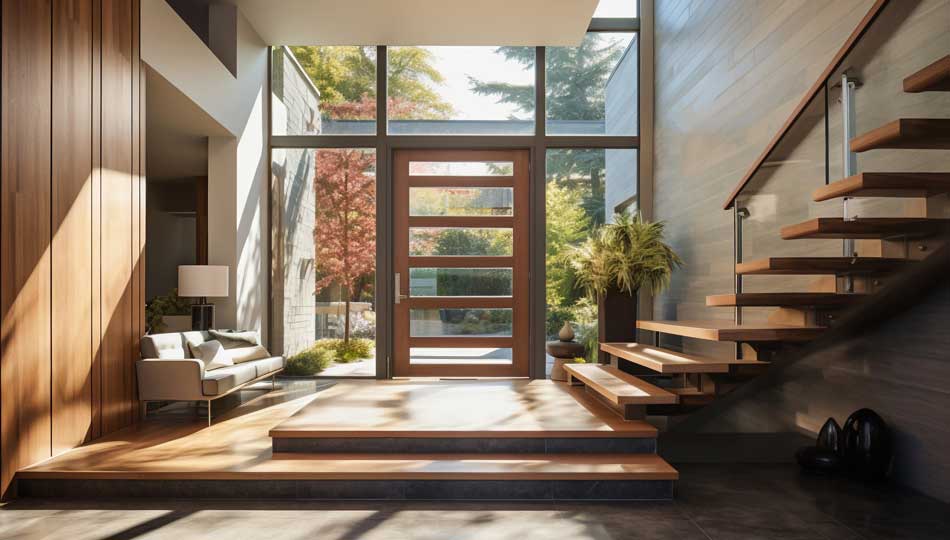Why renovate or extend your London home
Many London homes were built decades ago. Layouts often don’t suit modern living, and storage is limited. Families grow, work-from-home needs increase, and lifestyles change. Moving to a bigger house can be costly when you add stamp duty, agent fees, and higher property prices.
Renovating or extending allows you to:
- Stay in the same neighbourhood
- Avoid the high costs of moving
- Customise your home to fit your needs
- Increase property value
If your property has wasted space, renovation may be enough. If you need entirely new rooms, an extension can be the answer.
Choosing between renovation and extension
Before starting, decide whether you need more usable space or more square metres.
Renovation works within your existing footprint. This can mean removing walls for open layouts, re-configuring unused rooms, adding better storage solutions, or updating finishes.
A house extension adds extra space to your home. This can involve building outwards into a garden, upwards into a loft, or down into a basement.
The choice depends on budget, space needs, and local planning rules.
Types of home extensions in London
Rear extensions add space at the back of the house. They work well for larger kitchens and living rooms and suit houses with garden depth.
Side return extensions use the narrow side alley on terraced houses. They are often combined with rear extensions to create an L-shape.
Wrap-around extensions combine side and rear extensions to form a larger open space. These are ideal for maximising the ground floor layout.
Loft conversions turn unused attic space into a bedroom, office, or storage area. They add value without affecting garden space.
Basement conversions create an entire extra floor below ground. They work for gyms, home cinemas, or extra bedrooms but can be expensive.
Planning permission and building regulations
In London, planning rules are strict. Some extensions fall under permitted development rights, but many need planning permission. Always check with your local council before starting work.
Planning permission considers size, height, impact on neighbours, appearance, and materials. Homes in conservation areas have extra restrictions.
Building regulations are separate and ensure your project is safe, energy efficient, and structurally sound. They cover structure, insulation, drainage, electrics, and fire safety.
How to maximise space in small London homes
Even without a big extension, design changes can make your home feel bigger.
You can open up layouts to improve flow, use skylights or roof lanterns for natural light, and install built-in storage in alcoves or under stairs. Sliding or pocket doors save space, and multi-functional furniture can make rooms more flexible.

Cost considerations for renovation and extension
Costs depend on size, location, and finish quality. As a guide:
- Loft conversions: £40,000–£80,000
- Rear extensions: £25,000–£60,000
- Basement conversions: £60,000–£150,000+
- Full home renovation: £1,000–£2,500 per m²
Add fees for architects, planning, building regulations, and fittings. Keep a contingency budget of 10–15% for unexpected costs.
Working with architects and designers
Architects can unlock hidden potential in your property. They design layouts that meet regulations, improve light, and make the most of available space.
Interior designers focus on finishes, colours, and storage solutions. Even small projects benefit from their input. Professional plans also help builders give accurate quotes.
Maximising natural light and storage
Light and storage make homes feel more spacious.
For light, use large windows, glass doors, or skylights. Avoid heavy window coverings.
For storage, fit cupboards into alcoves, use underfloor spaces, and add shelves above doors or along hallways.
Sustainable building practices for urban homes
Sustainable design lowers running costs and reduces environmental impact. Options include:
- Insulating walls, roofs, and floors
- Installing energy-efficient heating systems
- Using reclaimed materials
- Choosing FSC-certified timber and low-VOC paints
Many buyers see sustainability as a selling point.
How to choose the right construction company
Look for a company with experience in London homes and local planning rules. Ask to see similar projects, check reviews, and compare detailed quotes.
A reliable builder makes the process smoother and reduces the risk of mistakes.
Avoiding common renovation mistakes
Common problems include starting without a clear budget, hiring the cheapest contractor without checking quality, changing designs mid-project, and ignoring building regulations.
Planning properly helps you avoid delays and extra costs.
Timeline for renovation and extension projects
Typical London timelines:
- Small renovations: 4–8 weeks
- Loft conversions: 10–14 weeks
- Rear or side extensions: 8–16 weeks
- Basement conversions: 16–24 weeks
Planning approval, weather, and supply delays can extend these times.
Tips for living through renovation or extension
If you stay in your home during the work, set up a temporary kitchen or living space, keep valuables away from construction areas, and agree on working hours with the builders.
For major work, consider short-term relocation.
Final checklist before starting your project
- Decide if you need renovation, extension, or both
- Set a realistic budget with contingency
- Hire a trusted architect and builder
- Get planning permission and building regulation approval
- Prepare for disruption during building work
When these steps are done, you can start your project knowing you are prepared.




